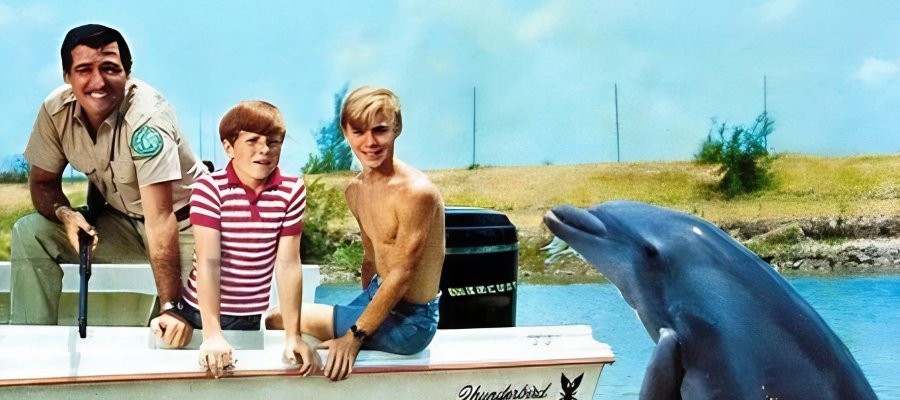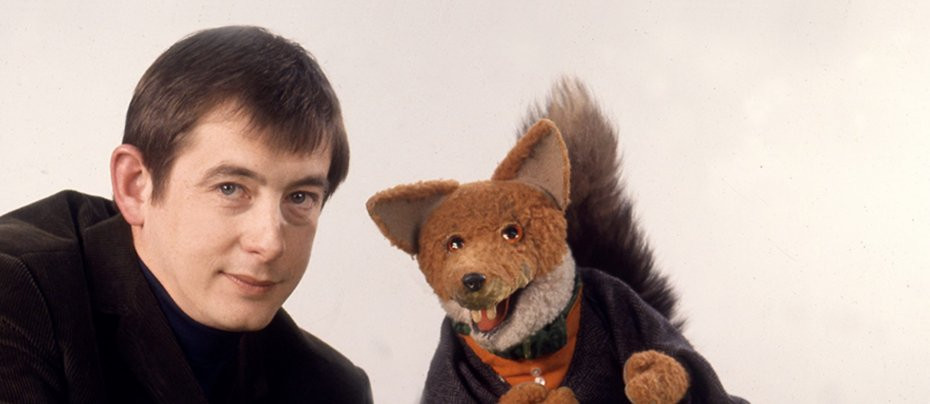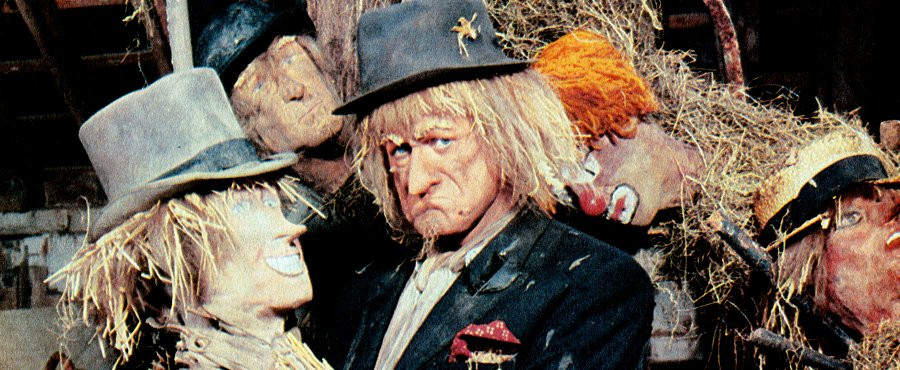
Disneyland: When Walt Disney Married The Enemy
In the late 1940's and the early 1950's , the fast-growing medium of television had a mortal enemy: The movie studios. Week after week, month after month, year after year, studio executives watched box office receipts drop as more Americans bought those funny-looking boxes with the wires and tubes, and sat down to watch every night. Television was dismissed as a “fad” in the early years; the studio heads were confident people would head back to the local theatres. They didn’t.
Slowly, very slowly, the studios started to make tentative moves toward peace with the opposition. Some of the smaller studios began producing shows for television; others leased or sold their film libraries to local stations. But it would take Walt Disney to show the industry that television could benefit from a little movie magic–and vice versa.
Disney’s studio was not one of the biggest at the time (its films were distributed by the now defunct RKO), but he was among the first studio heads to see the potential of television. In 1950, Disney created a holiday special for NBC called One Hour In Wonderland , which used plenty of Disney footage from his various animated features. It was a hit and all of the networks wanted Disney to create a weekly series for them.
By this time, Disney was obsessed with the creation of his dream amusement complex, where parents and children could enjoy themselves together. After years of studying the idea, visiting other complexes around the world, and endless research, Disney purchased 160 acres of orange groves and walnut trees in Anaheim, California, a quiet community in Orange County, just south of Los Angeles . But while his new amusement park was taking shape, the company was expanding into live action films and other ventures. Soon, it became apparent that Disney would need help to finance his dream park.
He realized that television could provide the answer. A successful series could add new revenues to the company and allow him to build his complex. Disney went to NBC first, and proposed a series in exchange for financial help on the amusement park. NBC said no. CBS was approached next; another rejection.
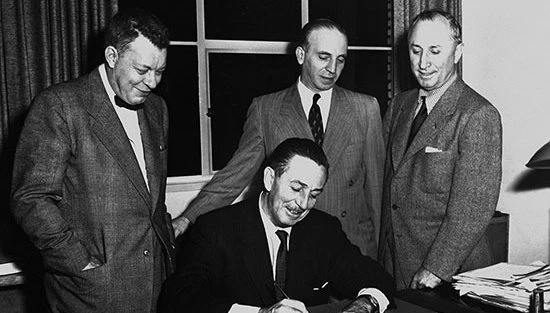
Finally, Disney went hat in hand to Leonard Goldenson, whose United Paramount Theaters chain had just merged with the perennial also-ran American Broadcasting Company. The UPT-ABC marriage did create a stronger company, but ABC was clearly a weak third in television–ahead of the soon-to-depart DuMont Television Network , but far behind CBS and NBC in viewers and affiliates that could carry its programmes.
By early 1954, ABC had no series among the top 25 programmes, and less than two dozen primary affiliates; stations affiliated with one of the other networks carried ABC’s line-up as an afterthought. But Disney’s overtures came at the right time: Goldenson’s background in film made him realize that it didn’t matter if a show was broadcast live or on film; if people liked it, they would watch. And he knew a series with the Disney name would be an instant draw for families. A deal was struck, where ABC would buy 20 episodes of the new Disney show, in exchange for 35 percent ownership of the amusement park. ( Goldenson also agreed to pay $500 thousand dollars to Disney; and helped secure additional funding by guaranteeing Disney’s bank loans.)
Although 20 episodes was a small number compared with the 39 episodes most series produced in a season, the Disney crew was determined to create new material for the television show–in addition to using the many cartoons and other material from the studio’s archives.
‘Executives believed the kids would not only control viewing for the “family hour,” but would fight mom and dad if they wanted to switch the channel’
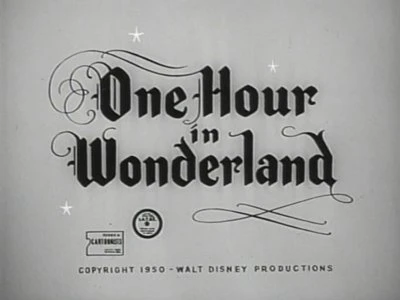
ABC quickly found multiple sponsors for the new show, to be called Disneyland: It secured family-friendly advertisers such as Swift Foods, Peter Pan Peanut Butter, the American Dairy Association–and the newly formed American Motors, which built Nash, Hudson and Rambler cars and Kelvinator appliances. ABC was also clever in scheduling Disneyland. At the time, most network programmes started at 8:00 PM; the 7:30-8:00 half-hour was filled mostly with news programmes and 15-minute variety shows by such artists as Perry Como . ABC decided to start Disneyland at 7:30 PM on Wednesday nights, to get a jump on the other networks. Executives believed the kids would not only control viewing for the “family hour,” but would fight mom and dad if they wanted to switch the channel to CBS’ Arthur Godfrey And His Friends or NBC’s I Married Joan in the middle of Disneyland.
On October 27th, 1954, ABC aired the first episode of Disneyland – which was called The Disneyland Story, as Walt Disney provided viewers with an overview of his new amusement park (which was under construction) and the various “lands” within the park (“Fantasyland,” “Adventureland,” “Tomorrowland” and “Frontierland”) – which all happened to be the segments making up the new Disneyland series. It was one of the first examples of what would be called “synergy” - one medium promoting another, and vice versa. The television show sparked interest in the theme park, and the park would help promote the weekly series. It also served as a platform to promote Disney’s upcoming theatrical films; a “documentary” on the filming of the movie 20,000 Leagues Under the Sea helped boost attendance and earned Disney’s first-ever Emmy award. (Today, the “documentary” would be known as an “infomercial”.)
The critics gushed over Disneyland (“It’s here and it’s wonderful!” wrote one pundit) but more importantly, the kids watched. Disneyland immediately gave ABC its first top ten series since the early seasons of The Lone Ranger. What’s more, CBS and NBC affiliates in cities that had no ABC station carried Disneyland. Arthur Godfrey’s former top ten programme started sliding in the ratings, while I Married Joan was cancelled in 1955.
Meanwhile, Disneyland would hit another peak on December 15th, 1954, when it aired the first instalment of a somewhat sanitized version of the life and times of frontiersman, soldier and politician Davy Crockett. With a young actor named Fess Parker in the title role, and a pre- Beverly Hillbillies Buddy Ebsen as his friend George Russel, Davy Crockett Indian Fighter was a smash hit. Two more instalments aired in January and February 1955: Davy Crockett Goes To Congress and Davy Crockett at the Alamo . (Historians say Crockett died in the Battle of the Alamo in 1835; the Disney version showed the soldier going to battle but did not hint of the outcome.) In any case, the Crockett programmes spawned a massive demand for coonskin caps in both the US and the UK; the show’s theme song “The Ballad of Davy Crockett” was recorded by several different artists ( Fess Parker among them); three of the versions hit the U.S. Top Ten. And in a move that generated additional profits for the studio, Disney edited the three Davy Crockett shows into a theatrical movie that was released worldwide.

Because only 20 episodes of Disneyland were produced for the initial 1954-55 season, ABC filled out the 52-week television season by immediately repeating all 20 shows, then chose the 13 best to air a third time. Surprisingly, the Davy Crockett episodes actually rose in the ratings, and the repeats didn’t do much worse than the original shows–proving the viability of reruns.
”To all who come to this happy place - welcome. Disneyland is your land.”
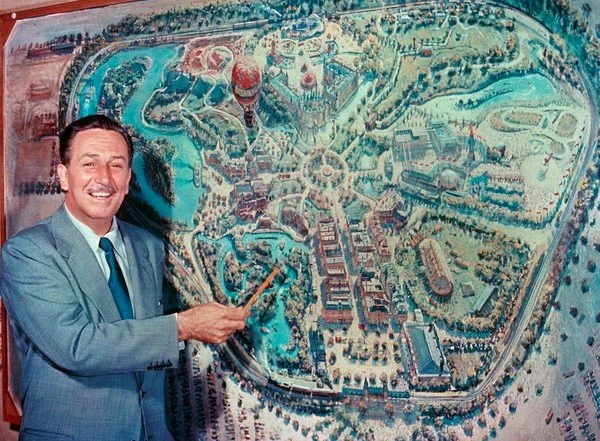
On July 17th, 1955, the park that spawned the television series finally opened for business to a large, invited crowd. “Dateline: Disneyland” aired live on ABC, hosted by Art Linkletter, Ronald Reagan and Bob Cummings. Disney himself dedicated the new project:
“To all who come to this happy place - welcome. Disneyland is your land. Here age relives fond memories of the past and here youth may savour the challenge and promise of the future. Disneyland is dedicated to the ideals, the dreams, and the hard facts that have created America... with the hope that it will be a source of joy and inspiration to all the world.”
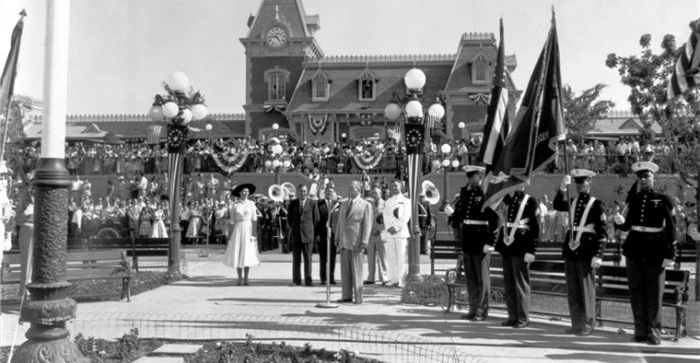
But what was known as the “International Press Preview” nearly backfired: Counterfeit tickets ensured a very crowded park. All major roads in the area were congested. Many of the drinking fountains were not operating due to a plumber’s strike–on a day where temperatures reached 101 degrees! The asphalt had been poured the night before, but it was so soft women wearing high-heels found their shoes sinking into the pavement. Food supplies ran out. A gas leak in Fantasyland caused other portions of the park to close for the afternoon. And parents even actually threw their kids over the shoulders of crowds to get them onto a number of rides! News media pundits gave the project a thumbs down, but reporters were given a private tour of the park by Disney himself the following day. And when the public was allowed into Disneyland on July 18th, it proved to be an instant hit, grossing ten million dollars after its first year of operation. Disney eventually worked out the kinks, and Disneyland was an unqualified success story. But by 1960, Disney bought out ABC’s share.
The success of the Disneyland series led to two more Disney-ABC ventures. The Mickey Mouse Club (1955-59) was a weekday afternoon show that introduced the “Mouseketeers” to American youth ( Annette Funicello was probably the best-loved and most remembered cast member). Then there was Zorro (1957-1959), a prime time adventure show about a swashbuckling masked hero in 19th century California.

By 1958, Disneyland was still a hit and adopted a new name: Walt Disney Presents. Disney wisely produced many of the shows in colour, even though ABC was unable to broadcast in colour. It proved to be a bone of contention between Disney and the network; ABC simply couldn’t afford the equipment to broadcast colour programming at the time. There were simply not enough colour TV sets in consumer hands to make the cost worthwhile; and despite improving ratings and a growing number of affiliates, ABC was still barely making its payroll and monthly bills.

In 1961, NBC executives lured Disney’s anthology series to the Peacock Network–with the promise that it would be shown in colour. (Since NBC’s parent company at the time was electronics maker RCA, the network was making a major colour push on its line-up to help sell RCA colour sets.) If Disneyland was an early commercial for the theme park, the new NBC series–retitled Walt Disney’s Wonderful World Of Color – would drum home the “need” for everyone to buy a colour set. In fact, the very first NBC episode introduced a new Disney animated character– Professor Ludwig Von Drake (the bumbling uncle of the famed Donald Duck) – to explain how colour broadcasting worked. The new Wonderful World of Color was a solid top-20 hit for NBC, becoming a Sunday night institution.
”With funds low, ‘Wonderful World of Disney’ began relying more heavily on repeats .”
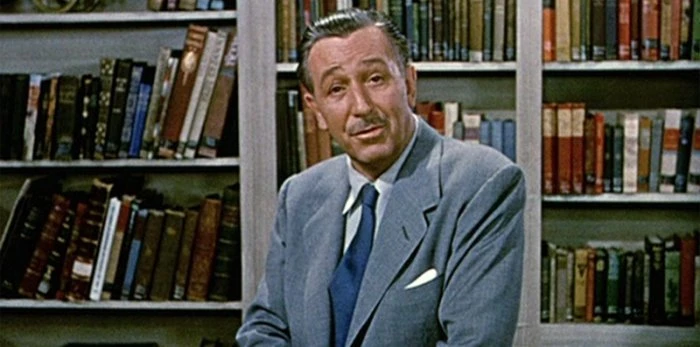
Walt Disney continued to host the show, making him as familiar to viewers as Ed Sullivan and Lucille Ball. But when Disney died in 1966, he was not replaced; instead, a voice-over announcer would introduce the show and its varied segments. By this time, World Of Color aired various specials from Disneyland, Disney-produced films, cartoons and cute short films about humans and animals. By 1969, the series was renamed The Wonderful World of Disney , but the studio was having problems with its bread-and-butter theatrical films; its focus on family-oriented comedies and cartoons proved to be no match for the more sophisticated films coming out from the major studios.
With funds low, Wonderful World of Disney began relying more heavily on repeats from earlier programmes and cartoons from the Disney vault. Adult viewers began tuning out and checking the competition such as ABC’s crime drama The FBI. In the fall of 1975, “ Disney” was moved to an earlier time slot on Sundays, as part of the Federal Communications Commission’s short-lived “Family Hour” regulations that required programmes for general audiences between 7:00 PM and 8:00 PM on Sunday nights.
“Disney” was the gold standard for family viewing, and was designed with the new FCC rules in mind. But the agency also allowed news and public affairs in the time slot, and that’s what CBS turned to when its family drama Three For The Road died a quick death against “ Disney.” CBS simply moved its Sunday afternoon news magazine 60 Minutes to fill the slot, and the show quickly captured an adult audience against Disney and kidvid programmes on ABC.
Within a few years, 60 Minutes was the top-rated series on television–beating out every other prime time programme. NBC tried to freshen the now-aging anthology in 1979 with a new name: Disney’s Wonderful World. But it was the same old wine with a new label. By 1981, NBC finally cut the Disney anthology loose; CBS picked up the show with yet another name change--Walt Disney – and moved it to Saturday nights. It lasted for two more seasons.
While ratings were marginal, the decision to drop the Disney anthology came from the studio itself, not CBS. In early 1983, the company finally moved into the cable television game with The Disney Channel – and it feared the CBS series would take viewers that would normally watch the new family-friendly cable offering. When Walt Disney went off the air, it had run on all three major networks for a total of 29 seasons – one of the longest-running anthologies in American television history (only the Hallmark Hall of Fame, which airs as occasional made-for-television films, has had a longer run).
When Michael Eisner took over The Walt Disney Company in 1984, he quickly shook the sleepy entertainment giant out from its Sleeping Beauty-like slumber of mediocre films and low earnings. One of his early moves was reinstating the Disney anthology–this time with Eisner as host–on ABC in 1986 (now renamed the Disney Sunday Movie ). Two years later, ABC’s option with Disney was not renewed and the movie night went to NBC, where it ran through 1990.
Eisner was a programmer at ABC during the 1960's and 1970's–and soon became its owner. In 1985, ABC was purchased by Capital Cities Communications, a very successful owner of television stations, newspapers and magazines. In 1996, The Walt Disney Company purchased Capital Cities-ABC; soon after, the Disney anthology returned to its original network home. Today, it airs as an occasional special on ABC, featuring Disney films – both theatrical and made for television.

Walt Disney indeed made his mark on television; by the fall of 1955, studios such as Warner Brothers, MGM and 20th Century Fox began producing series for television – not only on ABC, but on the other networks. The long-standing feud between the film studios and television was coming to an end, as each realized it could benefit from the other. Disney also showed the world a well-run theme park could be a major hit; and proved the effectiveness of cross-promotion.
And all it took was a little Disney magic to help make it happen.
Published on March 5th, 2019. Written by Mike Spadoni (2007) for Television Heaven.


